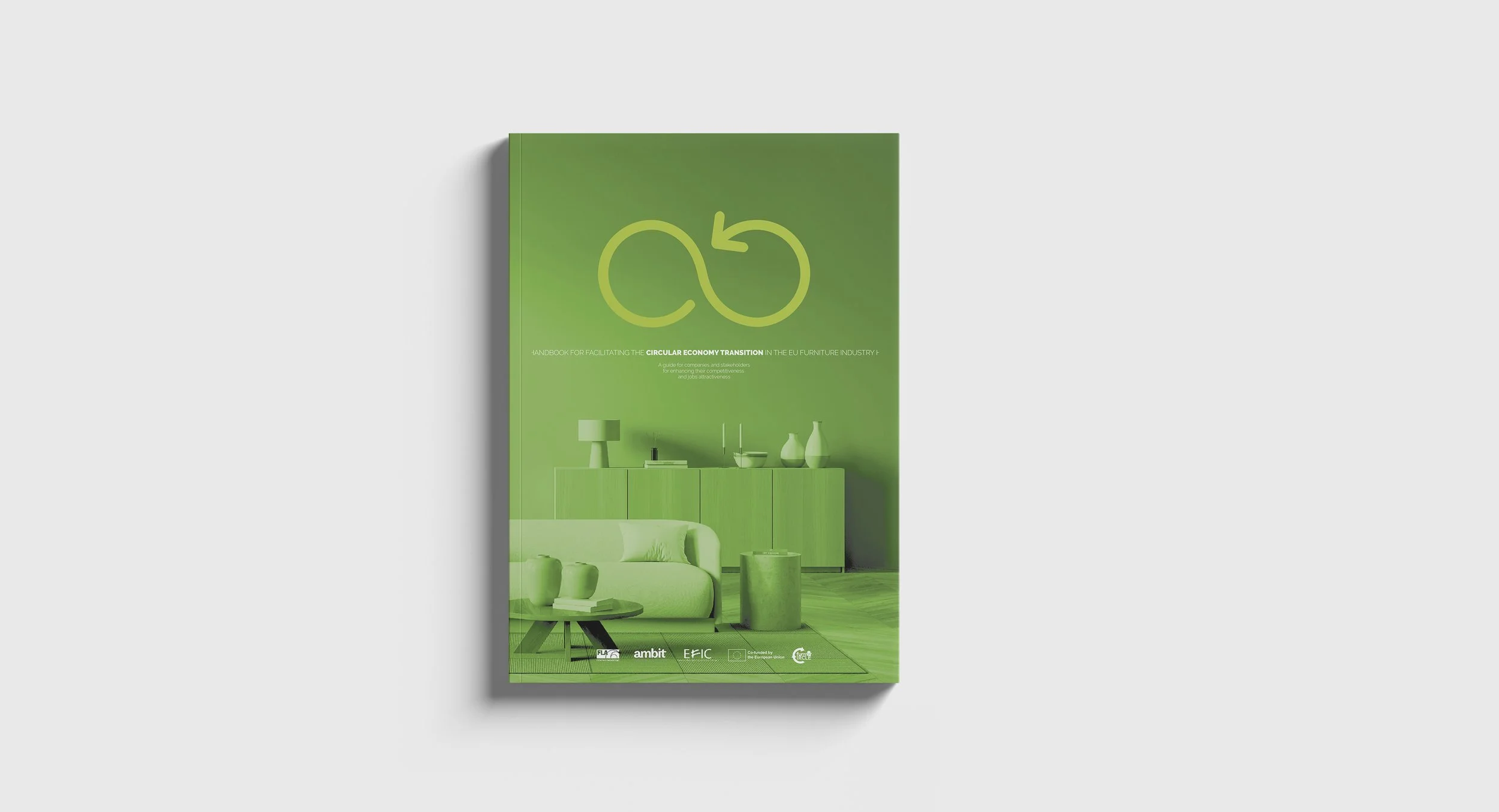
Handbook for facilitating the Circular Economy transition in the EU furniture industry
Project: FurnCIRCLE
Client: Ambit Cluster
Location: Europe
Year: 2024
Keywords: circular economy, circular design, furniture industry, sustainability
Click here to download the document
Why?
In the current context, characterized by significant environmental challenges and a complex global economic and social landscape, there is a clear need to transition towards a more resilient system that benefits businesses, people, and the environment. The European Union is creating a legislative framework with a series of directives aimed at promoting product circularity, which must be complied with in the coming years to achieve climate neutrality by 2050, as outlined by the European Green Deal.
The Ecodesign for Sustainable Products Regulation (ESPR, Regulation (EU) 2024/1781) was adopted to address the environmental impact of various product groups throughout their life cycle, improving their efficiency, extending their lifespan, an simultaneously facilitating open access to information on the sustainability characteristics of products through a Digital Product Passport.
Exploring how circular economy principles can be applied inthe furniture sector to promote resource efficiency, minimize waste, and create value throughout the entire product life cycle.
What?
As furniture is one of the priority groups due to its potential for improvement, the Clúster AMBIT, alongside EFIC and FLA, has launched the European project FurnCIRCLE to tackle the sector new challenge through practical guidelines and tools that support the implementation of circularity. A model whose benefits are perceived when applied in all business areas.
In this framework, Nutcreatives has had the pleasure of collaborating on the development of the HANDBOOK FOR FACILITATING THE CIRCULAR ECONOMY TRANSITION IN THE EU FURNITURE INDUSTRY, exploring how circular economy principles can be applied in the furniture sector to promote resource efficiency, minimize waste, and create value throughout the entire product life cycle.
How?
The guide emphasizes the importance of evaluating and adopting an evolved design perspective that considers sustainability criteria, capable of determining up to 80% of a product environmental impact. As a result of the participation of over 50 experts, 30 strategies are proposed to be considered for application from an early stage, indicating the required circular maturity level within the company for implementation, as well as related European regulations, the impact on the CANVAS model blocks, and examples of best practices as sources of inspiration.



